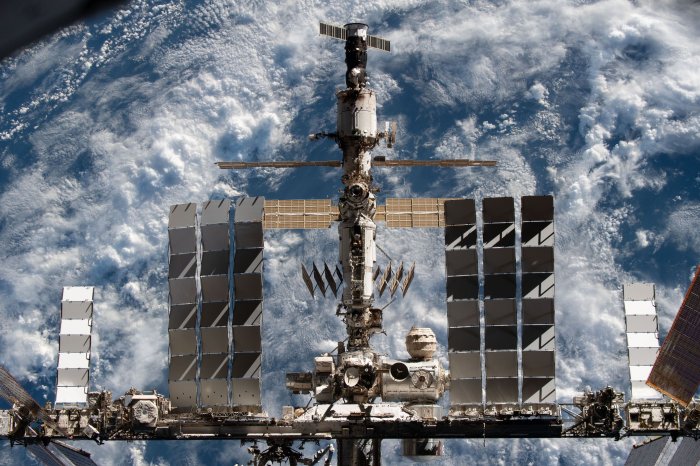1 of 2 | SpaceX launched 60 Starlink satellites on June 13 from Cape Canaveral Air Force Station, boosting the number of the spacecraft in orbit, which are sometimes visible from the ground, to over 500. Photo by Joe Marino/UPI |
License Photo
ORLANDO, Fla., July 2 (UPI) -- The recent boon of satellite launches has given stargazers something new to look at in orbit. Whether they are delighted or annoyed depends on whom you ask.
SpaceX's Starlink satellites show up in the night sky for short periods like a glowing chain of stars. They are especially visible in the days after a launch -- usually from Florida -- because the company releases about 60 at a time, stacked together.
As they fly around the globe, they spread out in a line.
Eventually, SpaceX signals their ion thrusters to fire, raising them to a higher orbit.
Astronomers have complained the satellites can ruin their observations. In response, SpaceX has worked on ways to dim their visibility, including testing a sunshade. But that won't affect the view until they are in a higher orbit.
In the meantime, others seem to enjoy the spectacle.
"There's no denying the coolness of seeing the string of lights in the sky," said Yan Fernandez, astronomy professor at the University of Central Florida in Orlando. "I was able to see them just a few days after a launch, so they were still pretty close together in a line."
SpaceX founder Elon Musk plans to launch thousands more satellites, which beam broadband service to the Earth.
Fernandez and other astronomers say locating such spacecraft, and knowing when they will fly over, is easier than ever. Smartphone apps, such as Satellite Tracker by Star Walk, or websites like Heavens-Above.com, help sky gazers know when to watch.
Dawn and twilight are when the satellites are most visible, but watching from a dark area is still important, Fernandez said.
The Heavens-Above website lets you set up an account and a list of locations and what satellites will be visible in those spots at what time. It also has a simulated sky map telling users what is overhead in real-time.
"We are not having in-person events now, because of the pandemic, but when we do, it's always fun to point out when Starlink or the International Space Station are overhead," Fernandez said.
SpaceX has over 500 of its large dinner table-size satellites in orbit, each weighing over 500 pounds. It began launching 60 satellites at a time in May 2019.
Stargazers have sent in photos of the Starlink chain in the sky to Tennessee-based Amateur Astronomy magazine, said editor Charlie Warren.
"Originally it was a novelty. After the initial launches, people were excited about it and would send in images. Then we heard complaints too, but I think that has died down," Warren said.
The International Space Station is pictured from the SpaceX Crew Dragon Endeavour during a flyaround of the orbiting lab that took place following its undocking from the Harmony module’s space-facing port on November 8. Photo courtesy of NASA
















